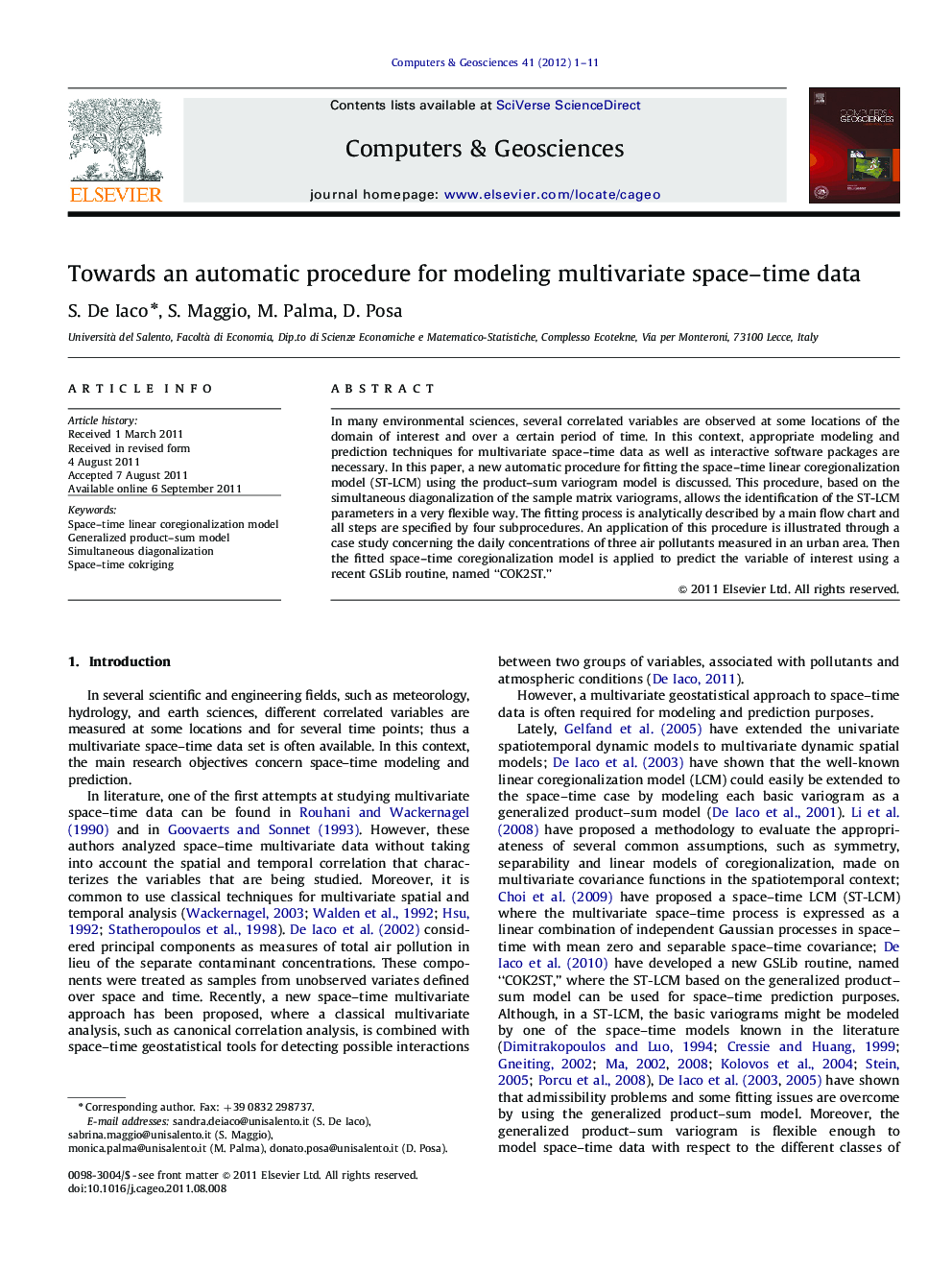| کد مقاله | کد نشریه | سال انتشار | مقاله انگلیسی | نسخه تمام متن |
|---|---|---|---|---|
| 508034 | 865167 | 2012 | 11 صفحه PDF | دانلود رایگان |

In many environmental sciences, several correlated variables are observed at some locations of the domain of interest and over a certain period of time. In this context, appropriate modeling and prediction techniques for multivariate space–time data as well as interactive software packages are necessary. In this paper, a new automatic procedure for fitting the space–time linear coregionalization model (ST-LCM) using the product–sum variogram model is discussed. This procedure, based on the simultaneous diagonalization of the sample matrix variograms, allows the identification of the ST-LCM parameters in a very flexible way. The fitting process is analytically described by a main flow chart and all steps are specified by four subprocedures. An application of this procedure is illustrated through a case study concerning the daily concentrations of three air pollutants measured in an urban area. Then the fitted space–time coregionalization model is applied to predict the variable of interest using a recent GSLib routine, named “COK2ST.”
► We discuss an automatic procedure for fitting a space–time LCM.
► This is based on the simultaneous diagonalization of the sample matrix variograms.
► The fitting process is described by a main flow chart and four subprocedures.
► Daily concentrations of three air pollutants measured in an urban area are modeled.
► A recent GSLibGSLib routine, named “COK2ST” is used.
Journal: Computers & Geosciences - Volume 41, April 2012, Pages 1–11